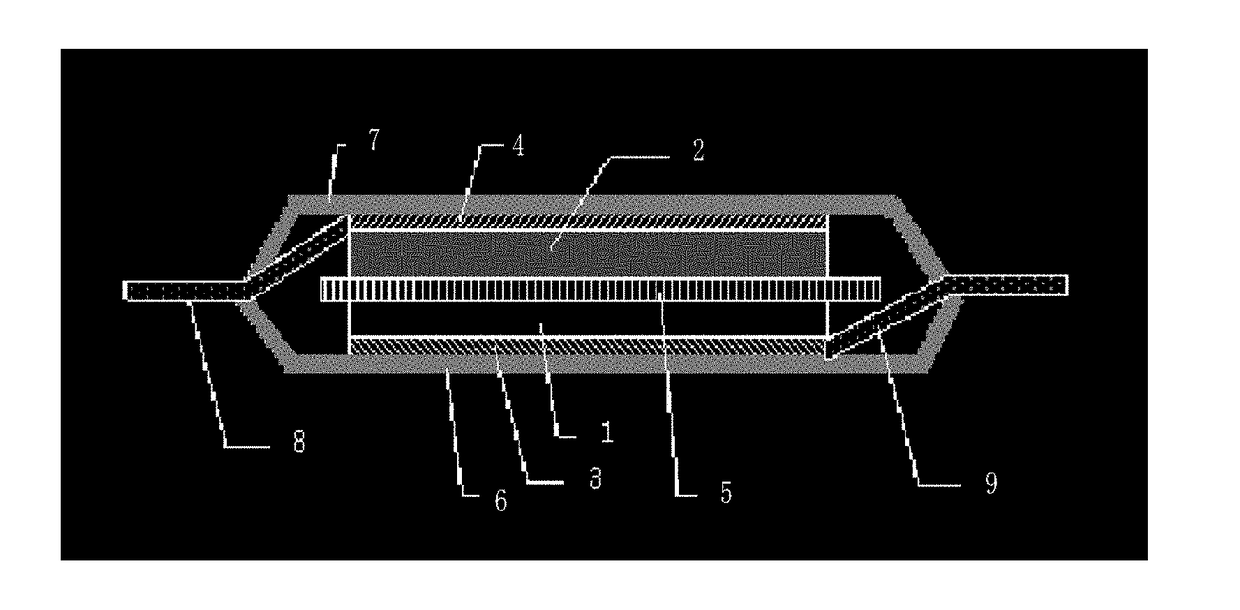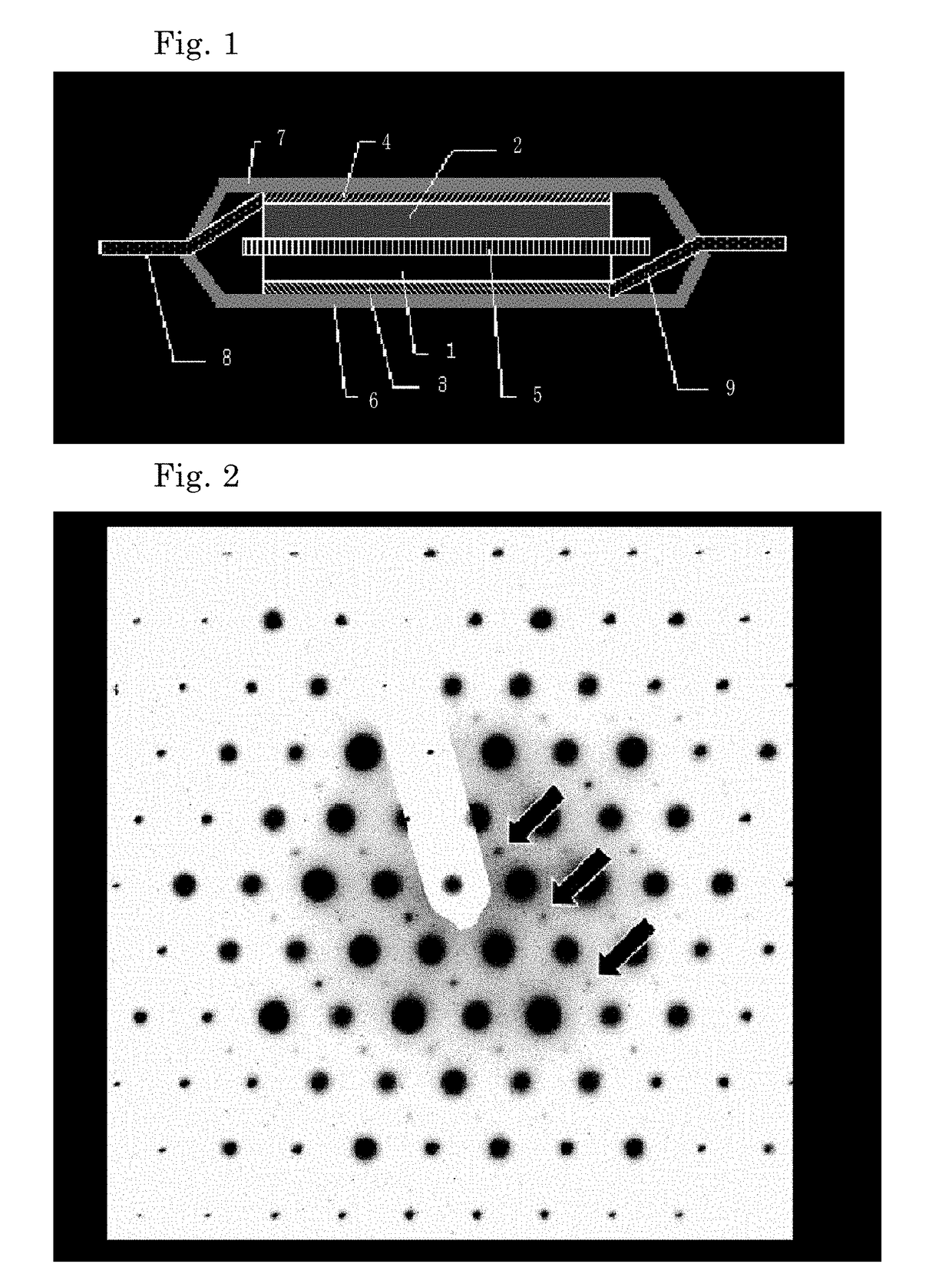Positive electrode active material for secondary battery, method for producing same and secondary battery
a technology of active materials and positive electrodes, applied in the direction of nickel compounds, manganates/permanentates, cell components, etc., can solve the problems of increasing energy density and improving life characteristics, so as to improve the life characteristic, improve the life characteristic of the positive electrode active material, and improve the life characteristic
- Summary
- Abstract
- Description
- Claims
- Application Information
AI Technical Summary
Benefits of technology
Problems solved by technology
Method used
Image
Examples
examples
(Preparation Conditions of Positive Electrode Active Materials)
[0084](Preparation of Positive Electrode Active Material 1)
[0085]Raw materials MnO2 and NiO were ground and mixed so that the molar ratio of the elements was Ni / Mn=0.5 / 1.5, and the mixture was calcined at 950° C. for 8 hours. The obtained NiMn composite oxide and Li2CO3 were mixed so that the molar ratio of Li, Mn and Ni was Li / Ni / Mn=1 / 0.5 / 1.5, and calcined in oxygen at 600° C. for 48 hours.
[0086](Preparation of Positive Electrode Active Material 2)
[0087]Raw materials Li2CO3, MnO2 and NiO were weighed so that the metal composition ratio became a targeted value, and ground and mixed. They were mixed so that the molar ratio of Li, Mn and Ni became Li / Ni / Mn=1 / 0.5 / 1.5, and the mixture was calcined at 850° C. for 8 hours.
(Preparation of Positive Electrode Active Material 3)
[0088]Acetate salts of lithium, manganese and nickel were mixed so that Li / Ni / Mn=1 / 0.5 / 1.5 in molar ratio, and were dissolved in an aqueous solution. This ...
example 2
[0106]Acetate salts of lithium, manganese, nickel and titanium were mixed so that Li / Ni / Mn / Ti=1 / 0.5 / 1.4 / 0.1 in molar ratio, and were dissolved in an aqueous solution. This solution and positive electrode active material prepared in Comparative Example 3 were mixed so that the ratio of moles of Li+Ni+Mn+Ti in the solution to moles of Li+Ni+Mn+Ti of the active material particles was adjusted to be 1 / 9. After mixing, the mixture was dried in an oven at 80° C., and calcined in air at 700° C. for 8 hours. The crystal structure was evaluated in the same manner as for positive electrode active material 1, and a battery was manufactured in the same manner as in Comparative Example 1 to prepare the sample of Example 2.
example 3
[0107]Acetate salts of lithium, manganese, nickel and titanium were mixed so that Li / Ni / Mn / Ti=1 / 0.5 / 1.2 / 0.3 in molar ratio, and were dissolved in an aqueous solution. This solution and positive electrode active material prepared in Comparative Example 3 were mixed so that the ratio of moles of Li+Ni+Mn+Ti in the solution to moles of Li+Ni+Mn+Ti of the active material particles was adjusted to be 1 / 9. After mixing, the mixture was dried in an oven at 80° C., and calcined in air at 700° C. for 8 hours. The crystal structure was evaluated in the same manner as for positive electrode active material 1, and a battery was manufactured in the same manner as in Comparative Example 1 to prepare the sample of Example 3.
PUM
| Property | Measurement | Unit |
|---|---|---|
| thickness | aaaaa | aaaaa |
| thickness | aaaaa | aaaaa |
| operating voltage | aaaaa | aaaaa |
Abstract
Description
Claims
Application Information
 Login to View More
Login to View More - R&D
- Intellectual Property
- Life Sciences
- Materials
- Tech Scout
- Unparalleled Data Quality
- Higher Quality Content
- 60% Fewer Hallucinations
Browse by: Latest US Patents, China's latest patents, Technical Efficacy Thesaurus, Application Domain, Technology Topic, Popular Technical Reports.
© 2025 PatSnap. All rights reserved.Legal|Privacy policy|Modern Slavery Act Transparency Statement|Sitemap|About US| Contact US: help@patsnap.com



